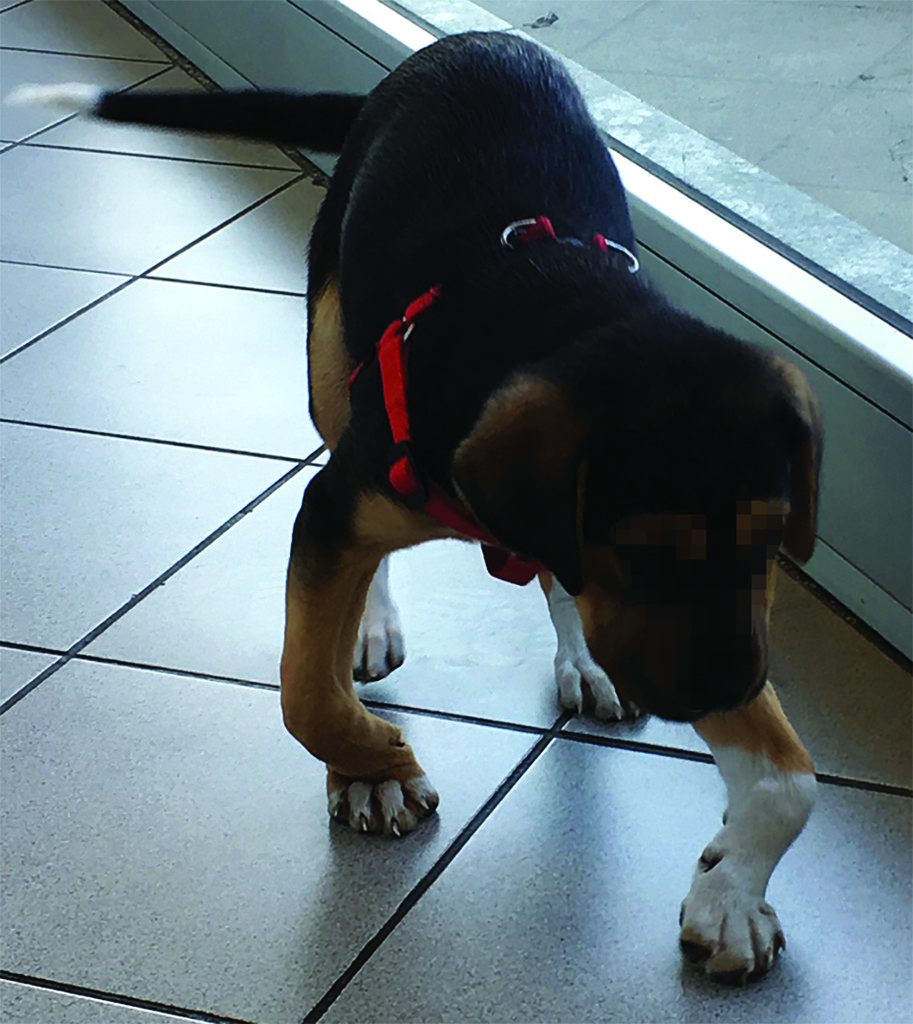Laurie's Blogs.
Apr 2023
Carpal Flexural Contracture Deformities
Carpal flexural contracture deformity is an uncommon musculotendinous disorder characterized by flexion of the antebrachiocarpal joint and supination of the manus in young animals (Petazzoni et al 2021). According to the literature, the contracture affects the flexor carpi ulnaris (FCU) muscle and tends to affect medium-, large-, and giant-breed puppies between 6 and 26 weeks of age!
One hypothesis is that it is the result of an asynchrony between skeletal and muscle tendon growth, resulting in a relative shortening of the FCU muscle. Other hypotheses center around nutritional causes, or that FCU muscles in affected dogs contain more type 1 (antigravity) fibres compared to their neighbouring muscles, which predisposes them to the condition.
Why does this occur?
It’s not trauma. Affected animals are typically well nourished and in good condition. They have normal musculoskeletal development.
Clinically, there is a sudden onset of lameness and a shift in weight bearing. The hyper-flexion in weightbearing is often accompanied with a varus deviation of the manus. Overexercise is speculated to play a part. The carpal joint is not painful and there typically isn’t effusion or crepitus. Radiographs are normal and bone development is normal as well.
The disease has been considered self-limiting and responsive to conservative management . Typically just a few days of rest result in a resolution of the deformity. If rest does not work, then an elbow-to-paw bandage for 1 – 3 weeks tends to yield the desired result.



From Petazzoni et al 2022, J Am Vet Med Assoc. 2021, 260(3)
Petazzoni et al 2021, reviewed the outcome of 47 dogs with carpal flexural contracture deformities to determine which was better; if rest alone or rest with a bandage.
And the result?
All dogs responded to conservative management, with all dogs regaining full extension of the carpal joint and return to normal ambulation. Average time from diagnosis to recovery was 2.9 2.2 weeks. The mean time to recovery did not differ significantly between treatment groups, however those with greater severity, those treated with rest and bandaging did better than dogs treated with rest alone.
The discussion commented that adjunctive therapies were not assessed, and that physiotherapy was not administered but that a previous report found comments recommending various modes of physiotherapy. Physiotherapy interventions have not been documented for these cases. One important comment made, was that if using a bandage, that frequent reevaluations are important to monitor standing joint angles – at least on a weekly basis
Well, there you go. I honestly started this blog post with a different spin in mind, but simply reading the study alone was super interesting to me. So, I hope you find it interesting as well.
Happy carpal assessing!
Cheers,
Laurie
Reference:
Petazzoni M, Mortellaro CM, Esposito A, Ferrari F, Piras A, Boudrieau RJ. Outcome of rest with or without bandaging for treatment of carpal flexural contracture deformities in puppies: 47 puppies and 75 joints (2000-2018). J Am Vet Med Assoc. 2021 Dec 21;260(3):320-325.


